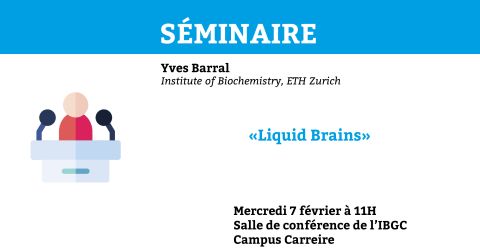"Liquid Brains"
For decades, the cytoplasm of eukaryotic cells has been considered as a largely dispersed aqueous environment mainly involved in mRNA translation, hosting metabolic reactions, trafficking of vesicles, and the diffusion of secondary messengers. However, the recent rediscovery of the role of phase separation in the organization of a flurry of different membrane-less organelles indicate that the cytoplasm should be considered rather as a complex emulsion hosting several networks of reciprocally interfering micro and nano-compartments with liquid and solid properties. In my presentation, I will present our work on the role of the cytoplasm in processing extracellular signals. Indeed, our data suggest that a network of phase separated droplets and amyloid filaments function as an onboard computing device allowing the cell to weight inputs while making fundamental life decisions, such as choosing a matting partner. I will use this paradigm to propose a model for how eukaryotic cells use the complex physics and physical chemistry of biopolymers for processing and storing information, allowing them to learn from, adapt and explore their environment. I will discuss the provocative possibility that all cells should be considered as cognitive units.


